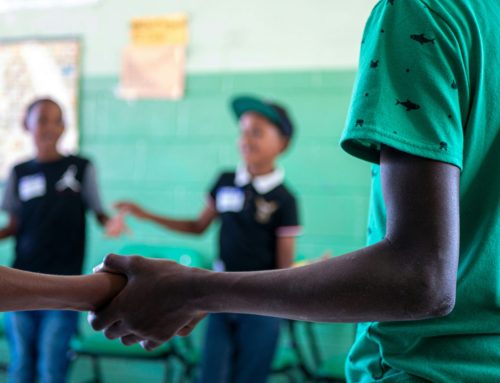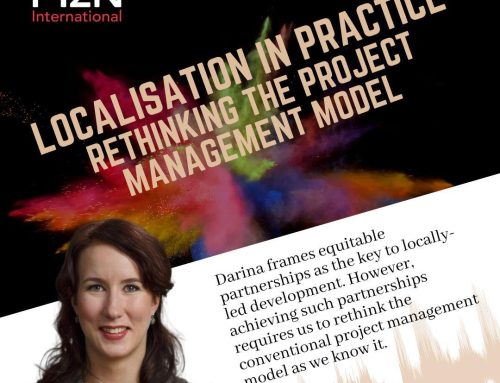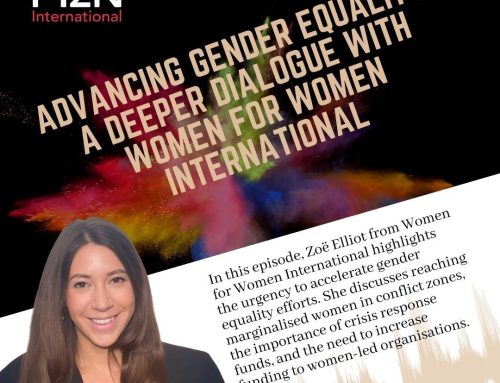It’s widely agreed that development and aid are most effective when localised. While donors are pushing for it, with USAID aiming to have 25% of its programs localised by 2030, and NGOs discussing the decolonisation of aid and “shifting the power”, most action has focused on moving programme design to the Global South. But what is often forgotten is a question closer to home: “Is our INGO actually structured for localisation?”
I have built and changed INGOs for over 15 years now. Together with my colleagues, we have brainstormed what it pragmatically takes to build an INGO that actually walks the talk.

Here are some suggestions:
Accept to leave some money on the table
-
- We’ve observed that many of our INGO partners found it a lot easier to shift the power to the global south after we’ve helped them change their business development structures and performance towards alternative funding models and working through their partners.
- Patrick Watt, CEO of Christian Aid, recently appeared on our podcast Chasing Impact to discuss their decision in 2022 to phase entirely out of direct implementation, which ultimately “did involve leaving money on the table”. He said direct implementation was becoming “a distraction from our partnership approach”, “introducing quite a lot of cost and complexity into the organisation” and “to be quite honest, we were doing things that other organisations were arguably better equipped to do”. But, he was also honest in admitting that having alternative funding streams supported the decision.
Shift the strategic focus in how we fund ourselves
-
- “Localisation is more like a merger with lots of local organisations’ – is what a programme manager told me back in 2020. He was right. Whilst the programmatic design power moves to local partners who know the context better, the thematic areas often change little. Livelihood INGOs will still support livelihood projects and partners in that area too.
However, the merger needs to happen at a far more operational level. If the power to develop solutions is to be located locally, but the funding channels are still largely international, then the INGO needs to align and co-pilot business development and strategy with local actors. Aside from good relationships, this means that areas like M&E, fundraising, business development and strategy design need to “fly in such close formation – that we basically become one organisation”, working on the same systems, with standardised processes. The analogy of a merger is helpful here. - Business development has shifted its focus from producing full proposals to building consortia and attracting supplementary income from impact investors, venture philanthropists and foundations. That generates an alternative funding stream that can support the organisation and partners. It also leaves the INGO with a clear mandate, making it easier for staff to understand the change.
- What also helps is to standardise the non-program specific parts of proposal production, speeding up proposal production with partners considerably. This also has the advantage of giving.
- “Localisation is more like a merger with lots of local organisations’ – is what a programme manager told me back in 2020. He was right. Whilst the programmatic design power moves to local partners who know the context better, the thematic areas often change little. Livelihood INGOs will still support livelihood projects and partners in that area too.
Programme management must focus on deepening, expanding horizontally and/or innovating in programmes.
-
- Deeping: Now that programme implementation is in the hands of capable partners (see below), we have observed that our partner NGOs are moving their programming either down to the source problem or up the problem chain along their theory of change. For example, several of our partner NGOs across 15 countries working towards poverty eradication and livelihood have deepened their programme focus to advocate for legal changes and a fairer business environment. This move levels the playing field and reduces poverty. At the same time, they set up social businesses at the beginning of long supply chains.
- An example: setting up farm equipment selling and maintenance businesses that are affordable to small-hold farmers and provide negotiation support for farmers vis-a-vis purchasers. The results of this strategy is that the farmers get better yields and achieve better prices.
- Horizontal expansion: We also saw that, following successful localization, INGO programs now had the free time and capacity to expand horizontally. To stick to the same example as above, the NGOs that set up affordable farm equipment businesses were also able to move laterally into poverty adjacent programming, such as delivering better business education, employability services (CV editing and career coaching) or even forming cooperative businesses. This had the added benefit that local NGO partners could use these poverty adjacent programmes as a contribution in kind in grant-driven programme work.
- Innovation: The holy grail for every non-profit professional, subject of countless advice blogs and part of every strategy initiative – but then rarely seen at scale. Innovation as an organisational habit is hard to achieve, but we have noticed that it gradually takes shape within a few months of successful localisation among our partner NGOs. Again sticking to the above example NGOs, following the establishment of poverty adjacent programming, these NGOs then went so far as to build an alliance to promote the financial inclusion of women and girls within the community. They even stepped back later on when they were no longer needed as a life-support system. This effort attracted several impact investors who aimed to achieve both good social and financial returns, further scaling the programme’s reach.
- Deeping: Now that programme implementation is in the hands of capable partners (see below), we have observed that our partner NGOs are moving their programming either down to the source problem or up the problem chain along their theory of change. For example, several of our partner NGOs across 15 countries working towards poverty eradication and livelihood have deepened their programme focus to advocate for legal changes and a fairer business environment. This move levels the playing field and reduces poverty. At the same time, they set up social businesses at the beginning of long supply chains.
In short, successful localisation allows many of our NGO partners to innovate, deepen and laterally expand their programming.
Get closer by going more local:
- Empowering local staff and partners to take the lead in decision-making processes is crucial. This may involve restructuring organisational hierarchies to provide more authority and autonomy to local teams. However, it requires well-defined central processes and continuous training to ensure that tasks that benefit from being done on a global level, such as monitoring and evaluation (M&E), research, accountability, reporting, donor communication, and brand identity, are done together.
Capacity building:
- Providing extensive training and capacity-building opportunities for local staff and partners is necessary to enhance their skills in program management, monitoring and evaluation, financial management, and other relevant areas. Within the MzN – NGO partnership group, we noticed a sharp increase in training and development work in those partner NGOs who truly and successfully localise.
Localisation of funding
- Actively seek and secure funding that directly supports local organisations and initiatives, rather than solely relying on external funding controlled by the INGOs. This may involve advocating for changes in donor practices and policies to prioritise funding for local actors.
Become a platform for partnership and collaboration:
- Foster genuine partnerships with local organisations, communities, and governments based on mutual respect, trust, and shared decision-making. This includes promoting collaborative approaches to program design, implementation, and evaluation. But what is often forgotten is that this in turn requires the managerial and technological infrastructure to inspire trust (i.e. internal dashboards reporting results), shared decision-making (without endless video calls, requiring an unambiguous international RACI grid to ensure swift and conflict-free shared decision making).
Resource sharing and knowledge transfer:
- Promote the sharing of resources, expertise, and knowledge between the INGO and local partners to build sustainable local capacity. In many of our NGO partners, this includes secondment programs, mentorship initiatives, and peer-to-peer learning exchanges. It also includes the creation of a fundamentally different approach to data collection, learning and sharing, involving the creation of dashboards reporting the performance of teams openly.
Agile management:
- Embrace adaptive management principles to respond flexibly to changing contexts and uncertainties. This involves fostering a culture of learning, innovation, and adaptation within the organisation and among its partners. See here for more about our agile management work with partners.
Accountability and transparency:
- Ensure accountability and transparency in all aspects of program implementation, including financial management, decision-making processes, and reporting mechanisms. This includes establishing mechanisms for community feedback and grievance redressal.
Overall, fully localising development or aid programs requires a fundamental shift in mindset, structures, and practices to prioritise local leadership, ownership, and sustainability. It involves a change in the operational running of the INGO, the financial structures and management culture. That is the only way to walk the talk!
- RACI is an acronym that stands for Responsible, Accountable, Consulted, and Informed. It is a project management and organisational tool used to clarify roles and responsibilities within a team or across multiple stakeholders for specific tasks or activities.




